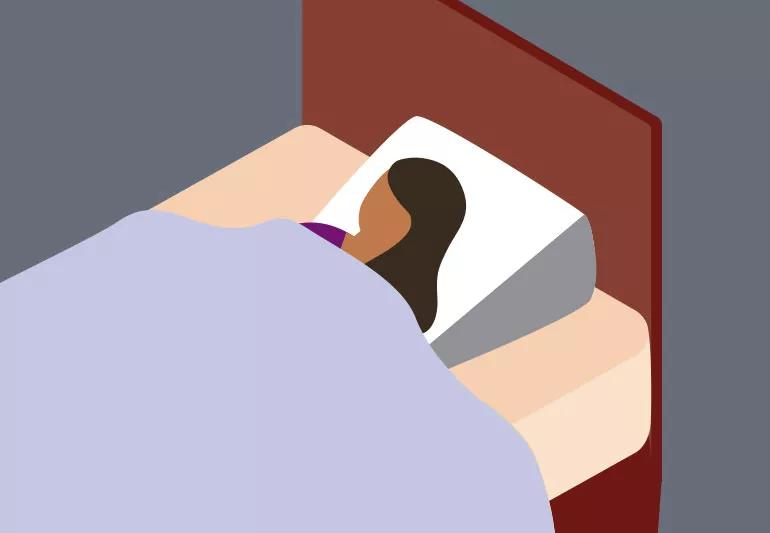For some lucky people, these pillows can eliminate the need for medications or surgery

If you experience acid reflux at night, you may get relief in an unexpected way: By sleeping on a specially designed pillow. For some lucky people, using wedge pillows regularly can eliminate the need for acid-reducing medications or surgery.
Advertisement
Cleveland Clinic is a non-profit academic medical center. Advertising on our site helps support our mission. We do not endorse non-Cleveland Clinic products or services. Policy
We talked to gastroenterologist Scott Gabbard, MD, about the role sleep position plays in acid reflux and what to look for in a wedge pillow.
Acid reflux, heartburn, and GERD are three different things.
Acid reflux happens when acid (and sometimes food) escapes from your stomach and makes its way up your esophagus and into your throat.
The discomfort acid reflux causes is called heartburn.
Gastroesophageal reflux disease (GERD) is a chronic and severe form of acid reflux. People with GERD experience heartburn and a host of other symptoms, including trouble swallowing, hoarseness, a feeling of tightness or food being stuck in your throat, a dry cough and not-so-fresh breath.
Whether you have standard-issue acid reflux or GERD, one thing’s for sure: Sleeping can be tough. Dr. Gabbard says there are a couple of different reasons for that:
Regular pillows only elevate your head, which, Dr. Gabbard explains, isn’t enough to prevent acid reflux. Wedge pillows are an effective way to manage reflux because they elevate your entire torso, making it harder for the acid to travel out of your stomach to begin with.
Advertisement
Wedge pillows are especially helpful for people with GERD, but Dr. Gabbard says that anybody who tends to get heartburn or acid reflux could potentially see their symptoms improve.
But wedge pillows aren’t just helpful for people with frequent acid reflux. You may also benefit from sleeping with an acid reflux pillow if you:
People with GERD may want to use a wedge pillow specifically designed to help with acid reflux, but it’s worth mentioning that there’s a wide range of supportive pillows on the market to address an equally wide range of sleep-disturbing health issues. For example, you can purchase wedge pillows that elevate your knees or legs — they’re especially helpful for people with circulation issues, varicose veins or people who recently had surgery. There are even specialty wedge pillows designed to support a pregnancy belly.
There are a few questions you need to ask yourself when you’re looking for an acid reflux pillow:
Congratulations. You have a wedge pillow! Now what?
Now, place the broad end on your bed with the flat side against the wall or headboard. When you lie down, the thinnest part of the wedge should hit somewhere between your hips and mid back. Your head and shoulders should be elevated and completely supported by the wedge. If your head is hanging off the end or your arms slide off the wedge, you’re going to need a longer/wider pillow.
Dr. Gabbard notes that it can take time to adjust to sleeping with a wedge pillow. You may have to try different brands, materials or inclines to figure out what’s most comfortable for you. Some people never get used to them, but if acid reflux is interrupting your precious sleep, it’s worth trying a few different brands before giving up.
Advertisement
Learn more about our editorial process.
Advertisement

What’s on your plate, like lean chicken vs. fatty beef, may determine whether you deal with post-meal acid reflux

While all three are different, they’re also closely related

Lifestyle changes such as diet and weight loss or medication such as antacids can bring relief

Dairy, wheat, seafood, nuts and other foods may trigger inflammation

People with an inflamed esophagus may also have other conditions that cause a nagging, persistent cough

Allergies, indigestion and the effects of gravity can all mess with your nose at night

Frequent burping can be many things — but likely not cancer

You have plenty of options to fill your belly, but caution is required when preparing meals

The best parenting style balances enforcing rules and showing plenty of love

Tips include cutting back on sugar, focusing on exercise and managing stress

It can be harder to let go when you’ve invested time, energy and emotions — but it might be the healthier choice long term